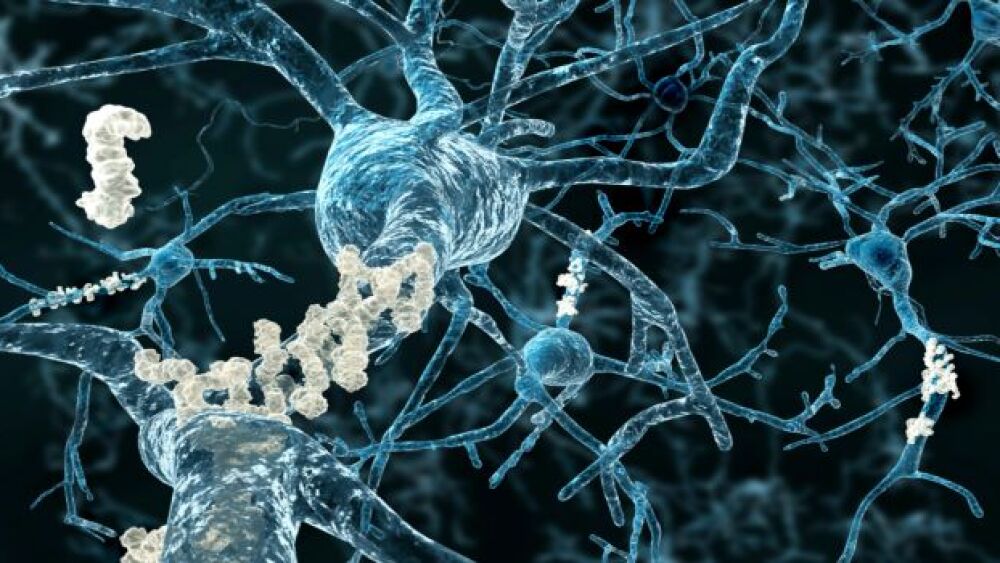Up to 40% of AD patients were found to have Lewy Bodies in their brain after succumbing to the disease.
Alzheimer’s Disease (AD) impacts more than six million Americans, killing 1 in 3 seniors diagnosed – more than breast and prostate cancer combined. The disease causes progressive brain damage, leading to memory loss, confusion, behavioral changes and the inability to speak, swallow or walk, with eventual loss of autonomic functioning.
AD is traditionally characterized by the misfolding of proteins amyloid beta and tau, creating plaques and tangles that are believed to cause neuronal dysfunction and death. However, a third type of misfolded protein called alpha-synuclein can coexist with plaques and tangles, causing a variant of AD known as Alzheimer’s with Lewy Body Variant (AD-LBV).
When alpha-synuclein misfolds, it aggregates into a more stable form that can continuously build up in the brain. The aggregates corrupt normally-folding alpha-synuclein proteins, forming pathological aggregates which are then released and spread throughout the brain, where they can begin the cycle of proliferation again. Alpha-synuclein is the main protein component of Lewy Bodies, which are structures that lead to the pathogenesis of Lewy Body Dementia (LBD) and Parkinson’s disease dementia.
Up to 40% of AD patients were found to have Lewy Bodies in their brain after succumbing to the disease. Patients with AD-LBV often suffer a more aggressive form of AD and tend to become incapacitated or die at younger ages. The variant shares resemblances with LBD, causing motor symptoms akin to those seen in Parkinson’s disease. Because of the similarities between AD-LBV and LBD, and the often years-long diagnostic process, making the distinction between the two diagnoses can be difficult for clinicians.
Differentiation between AD-LBV and LBD or other types of dementia is critical for physicians and patients because they infer unique treatment paths that don’t align. In fact, treating an AD-LBV patient with LBD therapeutics or vice-versa can have dire consequences.
“Certain patients, for example, have hallucinations and delusions. Certain drugs that you would treat someone with uncomplicated Alzheimer’s with will do well, but a Lewy Body variant patient can go into absolute crisis,” Dr. Russell Lebovitz, M.D, Ph.D., CEO and co-founder of Amprion told BioSpace. Antipsychotic medications that are routinely used for patients with AD experiencing behavioral disorders can cause serious side effects in LBD patients.
Adding to the difficulty, it has been impossible to know if AD patients are experiencing a Lewy Body variant until their brains are autopsied post-mortem. That is until Amprion, which develops diagnostics for brain diseases, unlocked the potential to do so with its SYNTap Biomarker Test.
The SYNTap Biomarker Test for Alzheimer’s helps to detect Lewy Bodies in AD patients by using their cerebrospinal fluid (CSF). Because alpha-synuclein is self-replicating, only a handful of particles are needed to detect its presence. By coalescing a patient’s CSF with excess recombinant alpha-synuclein protein, the SYNTap Test can accurately detect the presence of Lewy Bodies in an all-or-none response. The presence of protein aggregates will cause their amplification over several days to be a billion-fold and the absence of protein aggregates will reveal no amplification.
The SYNTap Test was awarded Breakthrough Device Designation from the U.S. Food and Drug Administration. In a joint study with the Oregon Health and Science University, Amprion conducted blinded analysis with CSF samples collected 1-15 years prior to autopsy in patients with AD, some other non-synucleinopathy neurodegenerative disease and healthy controls. The SYNTap Test was able to accurately detect the existence of misfolded alpha-synuclein in CSF from a clinically diagnosed AD patient 10 years before the autopsy identified the presence of Lewy Bodies.
Amprion was able to produce similar results in a confirmatory study performed with the University of California, San Diego in CSF collected before autopsy and CSF collected post-mortem. Clinical validation showed that the SYNTap Test had a sensitivity of 87.3% and a specificity of 97.2%, and none of the patients without Lewy Bodies in their brain tested positive for the aggregate.
“Being able to see the silent phase of a disease that is affecting more and more of us allows us to understand, and helps clinicians to understand, what’s really going on,” commented Lebovitz.
Importantly, the SYNTap Test can detect the presence of protein aggregates very early on, even before patients begin to experience classical symptoms of AD or LBD, which can lead to more personalized and proactive medicine before the disease causes progressive damage and loss of brain function. As Lebovitz said, the earlier the diagnosis, the better. A drug that might perform mediocrely at a late stage of the disease, could, at an early stage, become “miraculous.”
“We believe, moving forward, that neurodegenerative diseases share a lot more in common than people used to believe. We may want to treat them all just like cancer with personalized medicine,” Lebovitz said. By determining what type of dementia a patient has early on, physicians can work with patients to create a more targeted treatment plan, using a combination of therapies that could help slow the progression of the disease.
The SYNTap Test can also guide patients toward beneficial clinical trials, accelerate scientific innovation for drug development and help patients make informed health care decisions to navigate brain care. Moving forward, Amprion will work on quantitation to help drug developers understand the point at which reduction of the misfolded proteins produces a clinical benefit in trials of new drugs.
Lebovitz stated that Amprion hopes to understand whether other bodily fluids can be used to run the SYNTap Test in order to make it more accessible and available to patients who are either at risk for developing AD or who are just beginning the diagnostic process.
While the SYNTap Test is quite useful for detecting alpha-synuclein aggregates, the company is curious to see if the technology can also be used for detecting other proteins important in diseases such as Amyotrophic Lateral Sclerosis (ALS) in a clinical setting. The creation of such tests is a future research priority.





